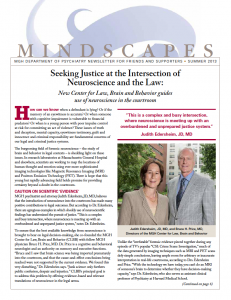This Spring, CLBB leadership met with center scientists and board members to discuss the center’s achievements over the past year, ranging from our public panels on Memory and Empathy to our OpEd’s in the Huffington Post and Washington Post.
Joshua Buckholtz, Assistant Professor in the Harvard Department of Psychology, and CLBB faculty member, spoke to the group about a relatively narrow set of questions in the field of “neurolaw”: those that the justice system actually wants answered, and those that neuroscience might have the tools to answer (either now or in the future). Dr. Buckholtz also discussed an exciting new CLBB-sponsored initiative to study the effects of brain stimulation to curb impulsive tendencies.
CLBB co-directors Judith Edersheim and Bruce Price, along with Director of Scientific Programs, Justin Baker, provided the Year In Review and outlined CLBB’s mission, research strategy and core program areas.
The full program, including slides from this presentation, is available below:




